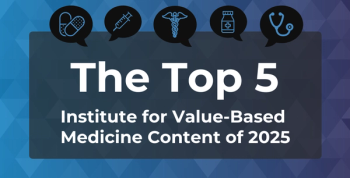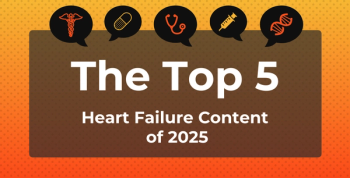
Improved Treatments, Prevention Drive Drop in US Ovarian Cancer Mortality: Muhammad Faizan, MBBS
The decline in ovarian cancer mortality rates after 2003 can be attributed to advances in treatment, precision medicine, improved preventive strategies, and a reduced disease incidence, according to Muhammad Faizan, MBBS.
The significant decline in age-adjusted
Watch
This transcript was lightly edited; captions were auto-generated.
Transcript
What factors do you think contributed to the significant decline in age-adjusted ovarian cancer mortality rates in the US since 2003?
There are quite a few reasons for it. Firstly, the treatment got decisively better. There were high-quality cytoreductive surgeries, which, in our words, we call debulking surgery. It not only became more accessible, but it also became consistently better, as well. Chemotherapy regimens were standardized, as well. There were some new drugs that came into play, like the [poly (ADP-ribose) polymerase] inhibitors. The net effect of all that was that more women lived longer after the diagnosis of ovarian cancer was made.
Another reason is precision medicine. Because of the routine genetic testing that we have now started to do for ovarian cancer, it's not only a single disease label. It is molecularly defined into subgroups, so clinicians can now use specific drugs that target the DNA repair defects in order to boost effectiveness and prolong survival in patients with ovarian cancer.
The third reason that I think came into play was precision prevention as well. Post 2003, we saw that genetic counseling and testing spread beyond tertiary care centers, identifying high-risk carriers who then received risk-reducing salpingo-oophorectomy or intensified specialist surveillance. There was also public and provider awareness, obviously, around symptoms and family history, with improved uptake of these preventive strategies as well.
The last point that I believe is the most important is that the incidence of ovarian cancer fell as well. It was because of 2 main reasons. The first was the long-term protective effects of oral contraceptives, which started to show among the patients. Secondly, there was a sharp decline post 2003 in menopausal hormone therapy use. Both of these factors together reduce the incidence of ovarian cancer, so combining less incidents with more effective therapy eventually led to the post-2003 reduction.
If I were to sum it up quickly, I would say 4 forces came into effect, which led to the post-2003 reduction. These were better treatments, precision medicine, precision prevention, and the falling incidence of ovarian cancer as well.
Newsletter
Stay ahead of policy, cost, and value—subscribe to AJMC for expert insights at the intersection of clinical care and health economics.







































